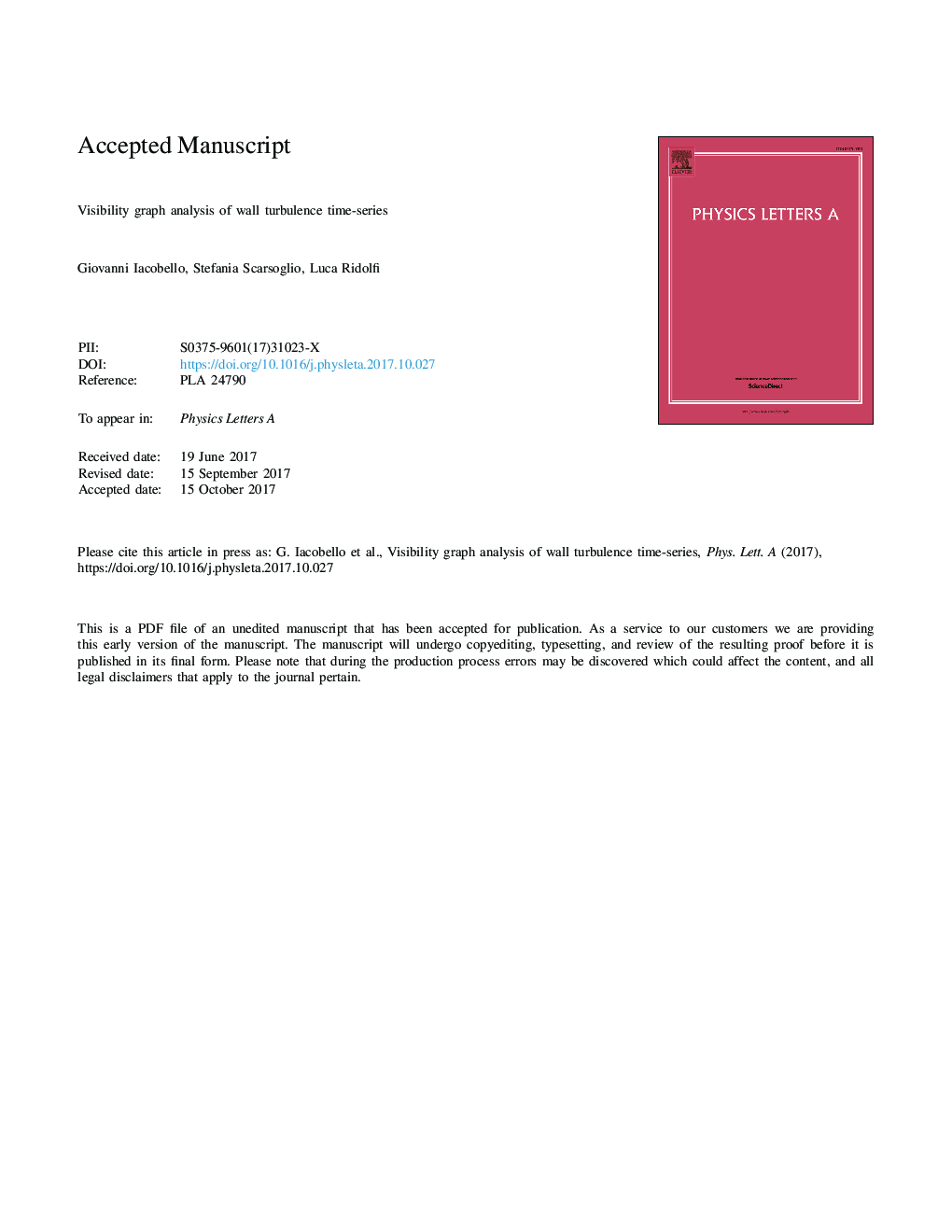| Article ID | Journal | Published Year | Pages | File Type |
|---|---|---|---|---|
| 8204284 | Physics Letters A | 2018 | 27 Pages |
Abstract
The spatio-temporal features of the velocity field of a fully-developed turbulent channel flow are investigated through the natural visibility graph (NVG) method, which is able to fully map the intrinsic structure of the time-series into complex networks. Time-series of the three velocity components, (u,v,w), are analyzed at fixed grid-points of the whole three-dimensional domain. Each time-series was mapped into a network by means of the NVG algorithm, so that each network corresponds to a grid-point of the simulation. The degree centrality, the transitivity and the here proposed mean link-length were evaluated as indicators of the global visibility, inter-visibility, and mean temporal distance among nodes, respectively. The metrics were averaged along the directions of homogeneity (x,z) of the flow, so they only depend on the wall-normal coordinate, y+. The visibility-based networks, inheriting the flow field features, unveil key temporal properties of the turbulent time-series and their changes moving along y+. Although intrinsically simple to be implemented, the visibility graph-based approach offers a promising and effective support to the classical methods for accurate time-series analyses of inhomogeneous turbulent flows.
Related Topics
Physical Sciences and Engineering
Physics and Astronomy
Physics and Astronomy (General)
Authors
Giovanni Iacobello, Stefania Scarsoglio, Luca Ridolfi,
